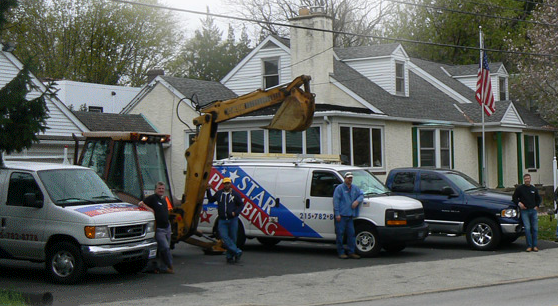How To Install An Air Admittance Valve In Plumbing: A Step-By-Step Guide
Installing an air admittance valve (AAV) in a plumbing system is a simple and effective way to reduce the amount of air pressure that can build up in the pipes. It prevents the accumulation of air that can lead to blockages, water hammer, and other problems. An AAV is easy to install and maintain, but it’s important to understand how it works and its requirements for safe operation. This article provides an overview of how to install an AAV in a plumbing system, including what materials are needed, the steps involved, and safety precautions to follow.
Definition
An Air Admittance Valve (AAV) is a one-way valve that allows air to enter a plumbing system when negative pressures develop in the piping. This helps to prevent the formation of a vacuum and allows for drainage of wastewater from the plumbing system. It works by allowing air to be drawn into the plumbing system when a negative pressure is created, such as when water is drained from a sink or toilet. AAVs are typically installed near the fixture trap arm and are designed to open when negative pressure develops, allowing air in and preventing a vacuum from forming.
Functionality
The functionality of an AAV is designed to help maintain proper drainage in the plumbing system. When water is drained from an appliance like a sink or toilet, it creates negative pressure in the pipes which can cause water to be sucked out of traps and allow sewer gases to enter the home. By installing an AAV, you can prevent this from happening as it will allow air into the system, maintaining proper drainage and preventing unpleasant odors from entering your home.
Types
There are two main types of AAVs: mechanical and non-mechanical. Mechanical AAVs use a spring-loaded diaphragm that opens when negative pressures develop in the pipes, allowing air in and preventing vacuum formation. Non-mechanical AAVs operate on gravity alone and are generally used on roofs or at high points in the plumbing system where negative pressures can occur due to gravity pulling wastewater down through drain lines.
Benefits of Installing an Air Admittance Valve
Installing an AAV can provide many benefits including: building code compliance, ease of maintenance, improved plumbing performance, reduced risk of sewer gas infiltration, reduced risk of water damage caused by low pressure suctioning fixtures dry, improved ventilation for fixtures with no vents connected directly to them, and more efficient drainage overall.
Building Code Compliance
In many areas, installing an Air Admittance Valve is now required by building codes as part of any new construction or renovation project involving plumbing systems. This helps ensure that all homes meet minimum safety standards for indoor air quality and prevents hazardous sewer gas from entering living spaces due to lack of proper venting systems.
Ease of Maintenance
AAVs require very little maintenance compared to traditional vents as they do not need periodic cleaning or clearing like other vents do – they simply open when needed due to negative pressure changes within your system. This makes them much easier to maintain over time which can save you money on costly maintenance costs down the road.
How Do You Install Air Admittance Valve In Plumbing?
Air Admittance Valves (AAV) are an important device used in plumbing systems to allow air in and out of the drain pipes. They help to maintain the proper pressure balance between the house and the sewer system, prevent backflow of sewage, and keep offensive odors from entering the home. The installation of AAVs is an easy and cost-effective way to ensure proper plumbing system functioning.
Why Would You Want to Install an AAV?
Installing an AAV can provide many benefits to a home’s plumbing system. Because they eliminate the need for traditional vents, they can save homeowners money by reducing installation costs. Additionally, they can help to reduce energy consumption since air admittance valves require no electrical power for operation. Finally, they can help to reduce noise from loud venting systems that may disturb residents in close proximity.
Tools and Equipment Needed for Installation
Before installing an AAV, it is important to have the right tools and equipment on hand. Commonly used items include pliers, wrenches or socket sets, vacuum devices or plungers, a hacksaw for cutting pipe to size as well as male adapters and washers for connecting it all together.
Steps to Install an Air Admittance Valve
Installing an AAV is relatively straightforward when following these steps:
1. Identifying the location for installation – this will depend on where you need it most within your plumbing system
2. Cutting the sink pipe – using a hacksaw or other cutting tool, cut your sink pipe to size according to your measurements
3. Connecting the end of the AAV – wrap a male adapter around one end of your cut pipe before attaching it into place with washers
4. Joining with male adapter & washers – use pliers or other tools as necessary when connecting all components together
5. Setting up pipe connections & leaks check – test all connections are secure and that no leaks are present before continuing with installation
6. Testing water pressure after installation – after completing all steps above, run water through your pipes and test that everything is running smoothly at normal pressure levels
Features To Look For In An AAV
When selecting an Air Admittance Valve for your plumbing system, there are several features you should look out for in order to ensure optimal performance: Self Clearing Mechanism – this feature prevents blockages from occurring within your pipes due to debris accumulation; Check Valves – these are useful for odor blockage; Vertical Installation Support – certain models come equipped with support fixtures allowing them to be installed both horizontally or vertically; Corrosion Resistant Materials – durability is key when shopping around so be sure to look out for models made from corrosion resistant materials like stainless steel or brass if possible.
Potential Risks Of Installing An AAV
It is important that homeowners understand all potential risks associated with installing an AAV in their homes before doing so: damage caused by improper installation of the valve which could affect roof structures; obstruction caused by too many vents/drains which may prevent proper airflow; unstable performance due age as older models may not work efficiently; expense of professional installation if not confident enough doing it yourself; potential legal issues if failing local building codes/regulations related with such installations.
Alternative Solutions If An AAV Is Not Appropriate
If installing an Air Admittance Valve is not appropriate based on local building codes or regulations then homeowners have several alternative solutions available: reinstallation of a house trap arm which helps with backflow prevention; installation of a new vent stack which also aids in keeping negative pressure from entering/exiting home through sewer lines; adding additional roof vents which provide more intake/outtake points during high-pressure periods like heavy rainfall etcetera…
The Difference Between AAV And Traditional Vents
The main difference between traditional vents and Air Admittance Valves lies mainly in their respective piping configurations: traditional vents require vent pipes be connected directly into each fixture while AAVs use a single unit connected into one section of drain piping instead; another difference lies in their mechanisms of operation: traditional vents use gravity-based flow while AAVs rely on pressure differentials instead thus providing convenience when installing multiple units per single drainpipe setup etcetera…
Maintenance Considerations For AAVs
FAQ & Answers
Q: What is an Air Admittance Valve?
A: An air admittance valve (AAV) is a one-way mechanical device that allows air to enter the plumbing system in order to keep the pipes from becoming depressurized and allowing sewer gases to escape. It is commonly used as an alternative to the traditional venting system.
Q: What are the benefits of installing an AAV?
A: The main benefits of installing an AAV include building code compliance, ease of maintenance, and eliminating the need for vents which can be costly and time consuming to install.
Q: What tools and equipment are needed for installation?
A: The tools and equipment needed for installation of an AAV include pliers, wrenches or a socket set, and a vacuum device such as a plunger.
Q: What are some features to look for in an AAV?
A: When looking for an AAV you should look for features such as a self-clearing mechanism, check valves for odor blockage, vertical installation support, and corrosion resistant materials.
Q: What are some potential risks associated with installing an AAV?
A: Some potential risks associated with installing an AAV include damage to roof structures due to improper installation, obstruction of vents or drains, unstable performance due to age, and the expense of professional installation.
Installing an air admittance valve in plumbing is a straightforward process that requires minimal effort and equipment. With the right tools and a bit of know-how, anyone can install an air admittance valve, allowing for better air circulation in pipes and preventing clogs from occurring. The installation of an air admittance valve is a great way to ensure the safety and longevity of plumbing systems.
Author Profile

-
Star Plumbing, located in Elkins Park, PA, is a full-service plumbing company owned and operated by Mitchell Gordon. Since its inception, Star Plumbing has been providing its customers with reliable, quality plumbing services.
The Star Plumbing website offers informative articles on DIY plumbing and plumbing equipment, offering readers helpful advice and tips on how to take care of their own plumbing needs. This is a great resource for those who are looking to tackle a plumbing project themselves, as it provides useful information and advice on how to safely and successfully complete a plumbing job. Additionally, the website provides detailed descriptions of the various plumbing tools and equipment that are available, as well as detailed instructions on how to use them.
Star Plumbing’s website is a great resource for anyone with plumbing needs. Whether a customer is looking for advice on how to take care of their own plumbing or to schedule service from Star Plumbing, the website offers helpful advice and information for all their plumbing needs.
Latest entries
- April 12, 2024Plumbing Equipment And AccesoriesI Tested And Ranked The Best 10 Inch Rough In Round Toilet In 2024: And Here’s What I Found
- April 12, 2024Plumbing Equipment And AccesoriesI Tested And Ranked The Best Stone That Cleans Toilets In 2024: And Here’s What I Found
- April 12, 2024Plumbing Equipment And AccesoriesI Tested And Ranked The Best Heat Tape For Plumbing In 2024: And Here’s What I Found
- April 12, 2024Plumbing Equipment And AccesoriesI Tested And Ranked The Best Kaboom Toilet Bowl Tablets In 2024: And Here’s What I Found
